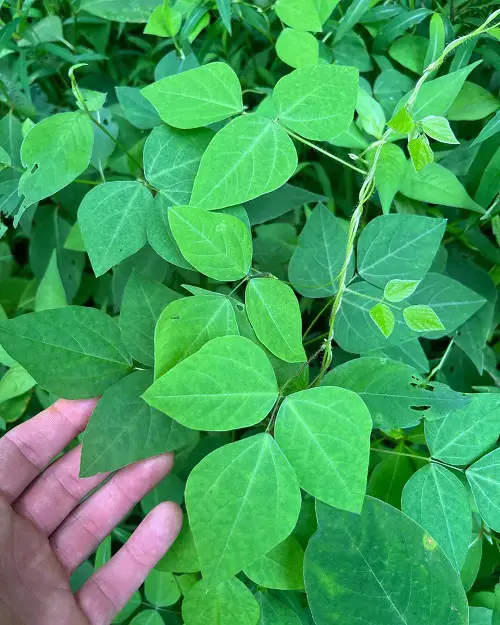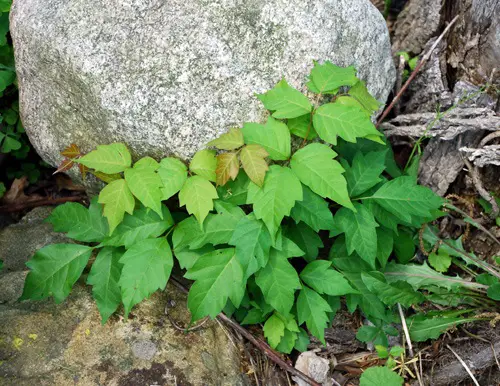Hog Peanut vs. Poison Ivy: Let’s have a closer look at the key differences between these two plants to help identify them easily!
What is a Hog Peanut?

Hog peanut (Amphicarpaea bracteata) is a leguminous vine that’s common in a wide range of environments, particularly in woodlands.
You can easily spot this plant by its three leaflets and small flowers with pods containing edible ‘peanuts.’ The vine can either twine or trail along the ground.
What is Poison Ivy?
Poison ivy (Toxicodendron radicans) is a woody vine that grows in various settings, including woods, fields, edges, and gardens.
This plant is notorious for causing skin irritation – you can identify it with its three leaflets and small green-white fruit clusters.
Check Poison Ivy Look Alike Plants with Three Leaves here
Hog Peanut vs. Poison Ivy: All the Differences

1. Differences in Their Appearances and Leaves
- Hog Peanut: It is a climbing or trailing vine with green stems and trifoliate leaves – meaning they are grouped in threes. Its flowers are generally white or pale pink.
- Poison Ivy: It can grow as a shrub or a vine (Climbs over trees in a ‘climber’ sense in the wild). Its leaves are also trifoliate, but the center leaflet has a longer stalk. The flowers are greenish-white.
2. Ecological Role and Benefits
- Hog Peanut: Apart from its ecological role in nitrogen fixation, hog peanuts are not commonly consumed by humans.
- Poison Ivy: While poison ivy can be painful to the human skin, it offers food for birds and animals, contributing to the ecological balance.
3. Skin Irritation
- Hog Peanut: Is generally safe for people and offers no significant dangers.
- Poison Ivy: It is critical to identify poison ivy to avoid skin discomfort. The “leaves of three” rule is a useful guideline for identification, and care should be taken to avoid touch.
Remember: It’s always better to stay on the safer side. If you’re not sure about a plant, don’t touch it! With these helpful hints, however, you may boldly travel the world of leafy greens without fear of an irritating encounter.


